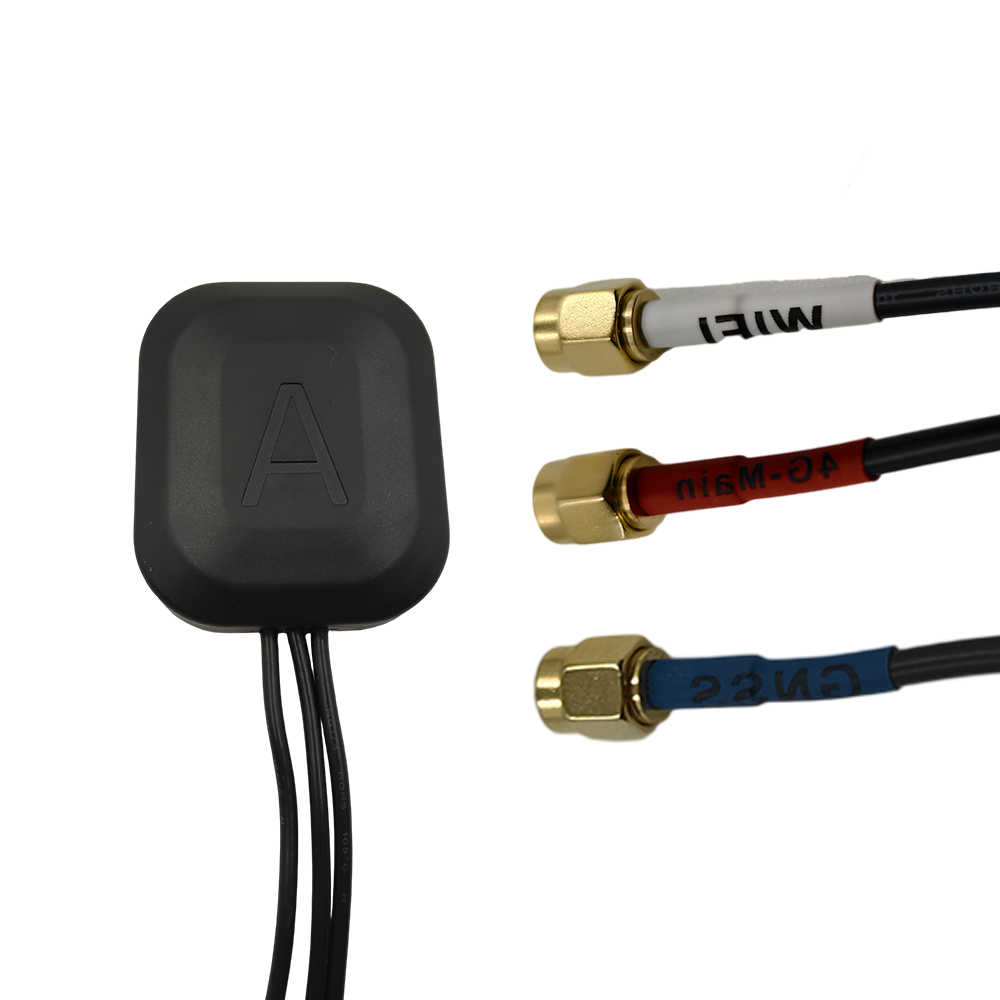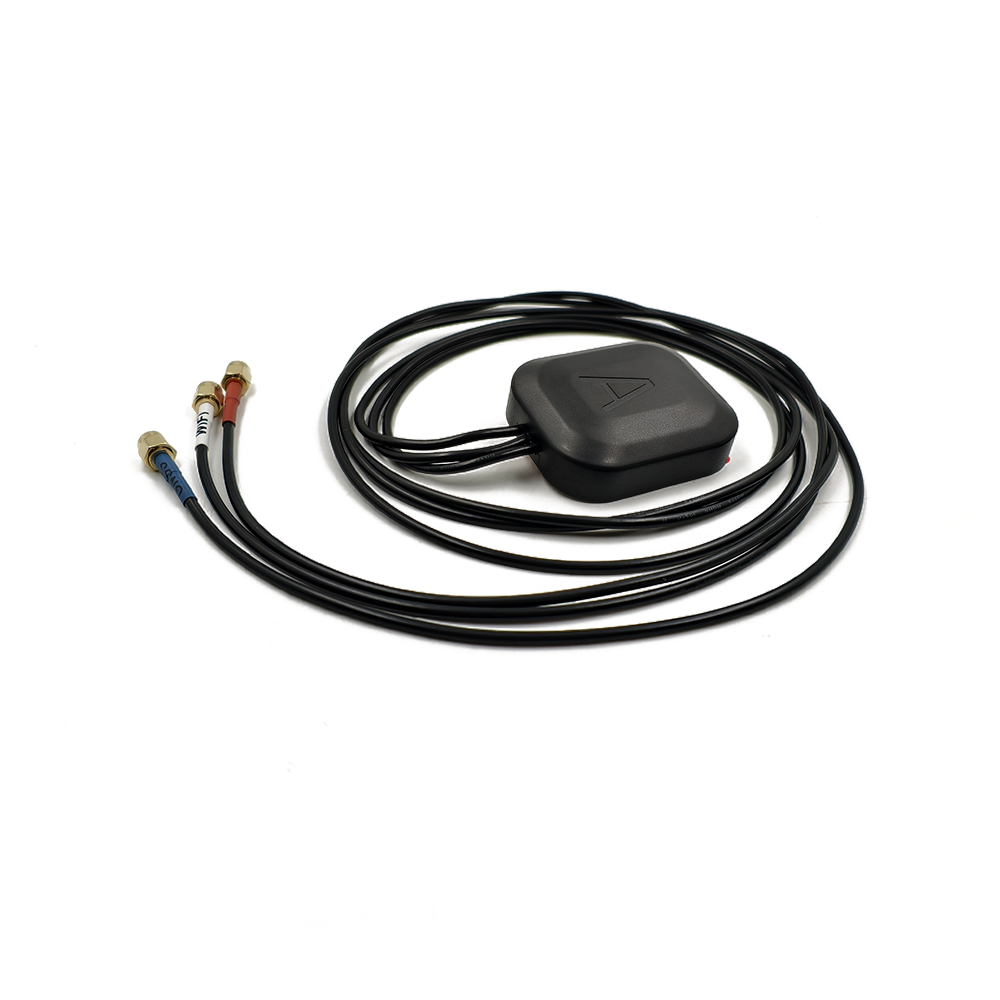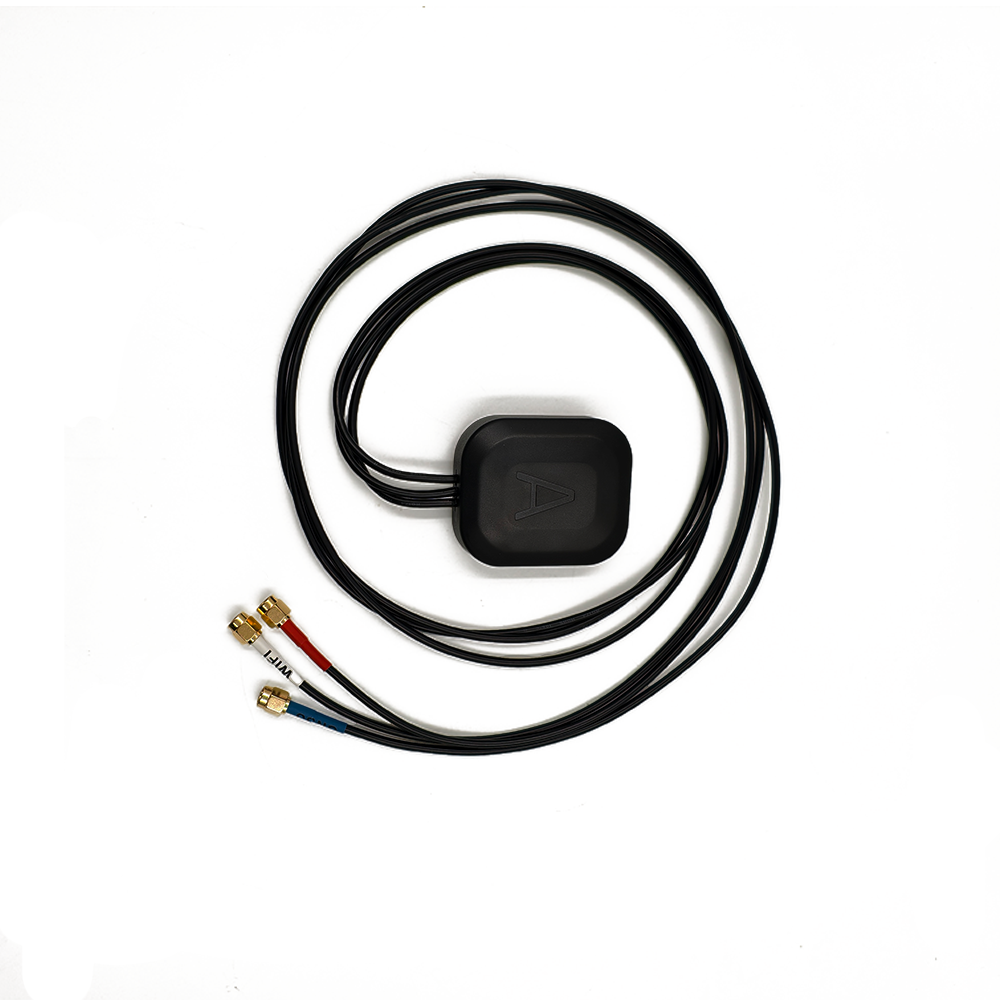5. Applications and Future Trends of Compact Multi-Frequency GNSS Antenna System
The compact multi-frequency GNSS antenna system’s unique blend of precision, space efficiency, and versatility has made it a cornerstone technology across diverse industries, while emerging technological advancements are poised to expand its capabilities even further. Its ability to deliver high-accuracy positioning in a small form factor addresses unmet needs in consumer, industrial, and professional sectors, driving innovation and operational efficiency.
Key Applications
Consumer Electronics: Smart Devices and Wearables
In consumer electronics, the system has become a standard feature in high-end smartphones, smartwatches, and augmented reality (AR) headsets—where space is limited but location accuracy is critical. For example, flagship smartphones equipped with compact multi-frequency GNSS antennas support features like precise indoor-outdoor navigation (e.g., guiding users to specific store aisles in malls) and AR apps that overlay digital content (e.g., virtual furniture) onto the real world with sub-meter alignment. Smartwatches use the antenna for accurate fitness tracking: runners can map their routes with centimeter-level precision, and hikers can navigate remote trails without relying on cellular signals. The compact design ensures these devices remain lightweight and sleek, a key selling point for consumers.
Unmanned Aerial Vehicles (UAVs): Precision Mapping and Delivery
Drones, especially small consumer and commercial UAVs, rely heavily on compact multi-frequency GNSS antennas to achieve stable flight and precise task execution. In precision agriculture, agricultural drones use the antenna to map crop fields with 50 cm accuracy, enabling variable-rate fertilization (applying nutrients only where needed) and pest detection. Delivery drones leverage the system to navigate urban environments, avoiding obstacles and landing exactly at designated drop-off points—critical for ensuring package safety and on-time delivery. Unlike larger antennas, the compact design does not add excessive weight to drones, preserving battery life and flight range.
Industrial Automation: Autonomous Robots and AGVs
In manufacturing and logistics facilities, autonomous guided vehicles (AGVs) and mobile robots use the compact multi-frequency GNSS antenna to navigate factory floors and warehouses with sub-meter accuracy. For example, in a car manufacturing plant, AGVs equipped with the antenna transport parts between assembly lines without human intervention, reducing errors and increasing productivity. In warehouses, mobile robots use the system to locate inventory shelves and optimize picking routes, cutting down on order fulfillment time. The antenna’s resistance to electromagnetic interference (EMI) from factory machinery ensures consistent performance, even in noisy industrial environments.
Professional Surveying and Geospatial Mapping
For field surveyors and geospatial professionals, the system offers a portable alternative to bulky traditional antennas, enabling on-the-go high-precision data collection. Small surveying tools integrated with the compact antenna can map construction sites, land parcels, and infrastructure (e.g., power lines) with centimeter-level accuracy when paired with RTK correction. This portability is a game-changer for teams working in remote or hard-to-reach areas—such as mountainous terrain or dense forests—where carrying heavy equipment is impractical. The system also supports real-time data sharing, allowing surveyors to transmit results to off-site teams instantly, accelerating project timelines.
Aerospace and Defense: Small Satellites and Military Systems
In aerospace, the compact multi-frequency GNSS antenna is used in CubeSats (small, low-cost satellites) for Earth observation and scientific research. CubeSats have strict size and weight constraints (typically 10x10x10 cm or smaller), making the antenna’s compact design essential. The system enables CubeSats to track their orbital position with high accuracy, ensuring they capture images or collect data from targeted areas. In defense, the antenna is integrated into small military drones and soldier-worn devices for navigation in GPS-denied environments (e.g., urban combat zones or dense jungles). Its multi-constellation support allows these systems to switch between GPS, GLONASS, and BeiDou if one constellation is jammed, enhancing operational resilience.
Future Trends
Miniaturization and Integration with Chip-Scale Technology
Future iterations of the compact multi-frequency GNSS antenna system will push the boundaries of miniaturization, with designs approaching chip-scale dimensions (less than 1 cm in diameter). Manufacturers will leverage advanced fabrication techniques like microelectromechanical systems (MEMS) and printed electronics to integrate the antenna directly onto a single chip, alongside the GNSS receiver and other components. This “all-in-one” chip design will reduce costs, simplify integration into small devices (e.g., tiny wearables for healthcare monitoring), and open up new applications in the Internet of Things (IoT)—such as smart sensors that track the location of shipping containers or industrial equipment with high precision.
Enhanced Anti-Jamming and Anti-Spoofing Capabilities
As GNSS jamming and spoofing threats become more prevalent (e.g., in urban areas or conflict zones), future antennas will incorporate advanced anti-jamming technologies. This includes the integration of adaptive beamforming—where the antenna dynamically adjusts its radiation pattern to focus on valid satellite signals and block jamming signals—and machine learning (ML) algorithms that detect and filter out spoofed signals (which mimic real GNSS signals to mislead receivers). These features will be critical for security-sensitive applications like military operations, emergency response, and critical infrastructure (e.g., power grids and airports), ensuring uninterrupted positioning even in hostile environments.
Integration with 5G and Edge Computing
The convergence of compact multi-frequency GNSS antennas with 5G networks and edge computing will revolutionize real-time positioning. 5G’s high bandwidth and low latency will enable the antenna to transmit large volumes of positioning data to edge servers instantly, where AI-powered algorithms can process the data to deliver even higher accuracy (e.g., centimeter-level positioning for autonomous vehicles). For example, in a smart city, 5G-connected traffic lights equipped with the antenna can share real-time vehicle location data with edge servers, optimizing traffic flow and reducing accidents. This integration will also enable new applications like remote-controlled construction machinery, where operators can guide equipment from miles away with precise positioning feedback.
Sustainability and Energy Efficiency
With growing focus on sustainability, future compact multi-frequency GNSS antennas will be designed with eco-friendly materials (e.g., recyclable plastics for housings and lead-free solders) and energy-efficient components. The LNA, a major power consumer, will be optimized to operate at lower voltages, reducing energy use in battery-powered devices like wearables and drones. Additionally, manufacturers will adopt circular economy practices, designing antennas for easy disassembly and recycling at the end of their lifecycle. These changes will align the technology with global sustainability goals while reducing operational costs for users (e.g., longer battery life for drones means fewer recharges and higher productivity).
Conclusion
The compact multi-frequency GNSS antenna system represents a pivotal innovation in satellite positioning technology, bridging the gap between high-precision performance and space efficiency. Throughout this series, we have explored its core value: from its role as a solution to the limitations of single-frequency antennas and bulky high-precision systems (Overview), to the meticulous engineering of its radiating elements, substrates, and enclosures (Design and Construction); from the interconnected processes of multi-band capture, interference mitigation, and signal conditioning that drive its performance (Working Principles), to the balance of advantages (superior accuracy, portability, versatility) and challenges (design complexity, thermal sensitivity) that shape its real-world use (Advantages and Challenges); and finally, to its diverse applications across consumer electronics, drones, and defense, and the emerging trends that will define its future (Applications and Future Trends). Together, these elements highlight why the system has become an indispensable tool in the global positioning ecosystem.
The system’s impact extends beyond technical performance: it has democratized high-precision positioning, making it accessible to industries and users that previously could not adopt bulky, expensive antennas. For example, small-scale farmers can now use drone-based precision agriculture to boost crop yields, and consumer can enjoy AR experiences that seamlessly blend digital and physical worlds—all thanks to the antenna’s compact design and accuracy. In industrial settings, it has improved operational efficiency, reducing errors in manufacturing and logistics, while in defense and aerospace, it has enhanced resilience and capabilities in challenging environments.
Looking ahead, the future of the compact multi-frequency GNSS antenna system is bright. Miniaturization, anti-jamming technologies, 5G integration, and sustainability will expand its applications, making it a key enabler of smart cities, autonomous systems, and the IoT. While challenges like cost and signal cross-talk remain, ongoing innovations in materials science, AI, and fabrication will continue to address these limitations, driving the technology toward greater accessibility and performance.
For manufacturers, the system represents a opportunity to innovate and differentiate their products, while for users, it offers a path to greater efficiency, accuracy, and reliability. As the world becomes more connected and dependent on precise positioning, the compact multi-frequency GNSS antenna system will remain at the forefront of technological progress, shaping how we navigate, work, and interact with the world around us. In essence, it is not just a component—it is a catalyst for a more precise, efficient, and connected future.




































































 Language
Language
 En
En Cn
Cn Korean
Korean

 Home >
Home > 








 18665803017 (Macro)
18665803017 (Macro)













